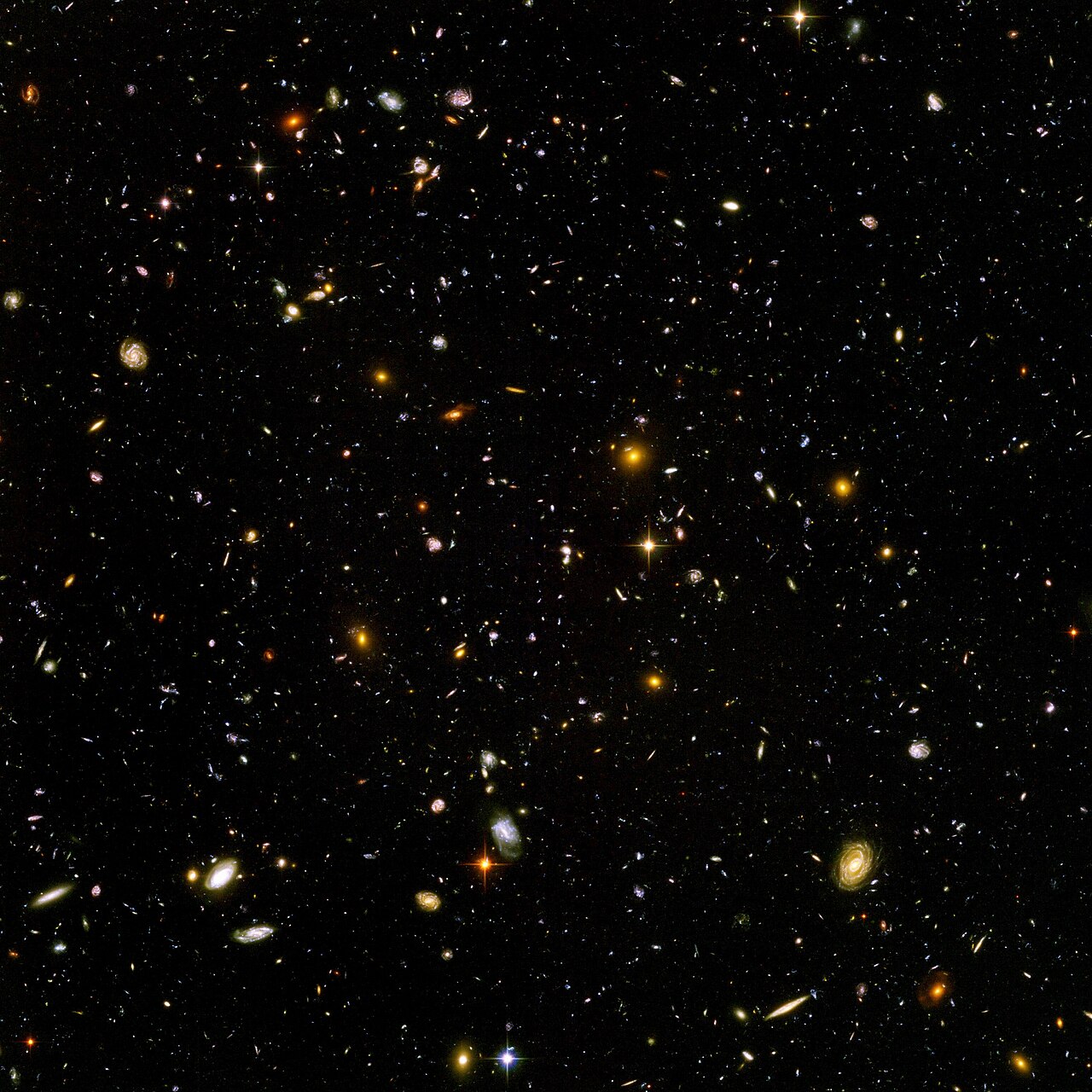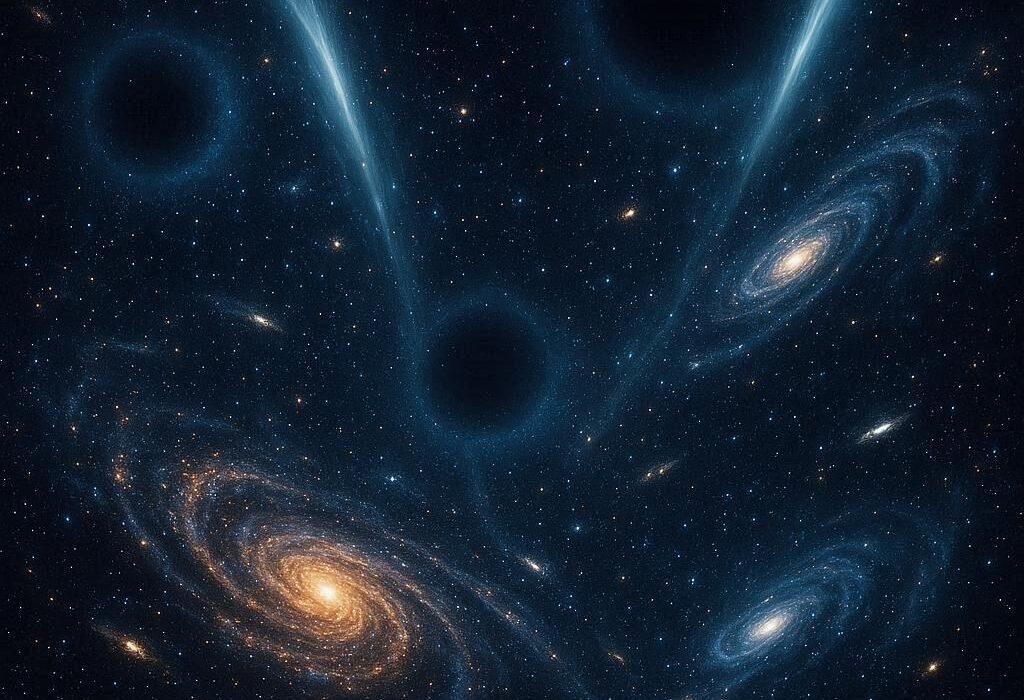The universe is vast, mysterious, and endlessly fascinating. Every night when we look up at the stars, we are gazing into a cosmic ocean billions of years in the making. For centuries, humans have tried to unravel its secrets, and yet with every discovery, the universe reveals itself to be even stranger than we imagined. It is not just a collection of stars, planets, and galaxies—it is a living, evolving story of energy, matter, and time itself.
In this article, we will explore fifteen incredible facts about the universe that may surprise you. These truths are scientifically accurate, deeply fascinating, and might just change the way you see the night sky forever.
1. The Universe Is Almost 14 Billion Years Old
The age of the universe is about 13.8 billion years, according to measurements of the cosmic microwave background—the faint glow of radiation left over from the Big Bang. This means that everything we see today, from the stars in the night sky to the atoms in our bodies, is part of a story that began nearly 14 billion years ago.
To put this in perspective, Earth is only about 4.5 billion years old, and human civilization has existed for less than 0.01% of cosmic history. We are newcomers in a universe that has been evolving for eons before us.
2. The Universe Is Expanding Faster Than Expected
One of the most astonishing discoveries of the 20th century was that the universe is not static but expanding. Galaxies are moving away from each other, and the farther they are, the faster they recede. This was first discovered by Edwin Hubble in the 1920s.
But here’s the incredible part: in the late 1990s, scientists found that the expansion of the universe is actually accelerating. Something—an unknown force we now call dark energy—is pushing the universe apart at an ever-increasing rate.
This means that distant galaxies are being carried away from us faster than the speed of light, and one day, their light will never reach us again. The cosmos is literally slipping beyond our view.
3. Most of the Universe Is Invisible
When we look up at the night sky, we might think we are seeing most of what’s out there. But the truth is that all the stars, planets, and galaxies we observe make up less than 5% of the universe. The rest is invisible to us.
About 27% of the universe is dark matter, a mysterious substance that exerts gravity but cannot be seen or touched. And nearly 68% is dark energy, the force driving cosmic expansion. We don’t yet know what dark matter and dark energy really are, but together, they dominate the universe.
In other words, most of the universe is a mystery. The cosmos we can see is only a tiny fraction of the cosmic iceberg.
4. There Are More Stars Than Grains of Sand on Earth
When you walk on a beach and feel the sand between your toes, you might think there could never be anything more countless than those grains. But the universe begs to differ.
Astronomers estimate there are about 200 billion trillion stars in the observable universe—that’s a 2 followed by 23 zeros. This number is greater than all the grains of sand on every beach and desert on Earth combined.
Every one of those stars may have planets orbiting it. The vastness of the universe is almost beyond comprehension.
5. Black Holes Can Warp Time
Black holes are not only fascinating because of their immense gravity; they also have the power to distort time itself. According to Einstein’s theory of general relativity, time runs more slowly near a strong gravitational field.
If you orbited close to a black hole, hours for you might pass while years went by for someone far away. This is called time dilation, and it means black holes are not just cosmic monsters—they are also natural time machines.
While we cannot use them to travel back in time, they remind us that time is not universal but relative, depending on where you are in the universe.
6. There May Be More Universes Than Just Ours
Our universe might not be the only one. Some theories in physics suggest that we live in a multiverse—a vast collection of universes, each with its own physical laws.
This idea comes from quantum mechanics, cosmic inflation, and string theory, all of which imply that what we call “the universe” may be just one bubble in an infinite cosmic ocean.
If true, this means that everything we know—galaxies, stars, Earth, and even ourselves—is just a tiny part of a much larger reality.
7. The Universe Has No Edge
One of the strangest facts about the universe is that it has no edge. We often imagine space as a giant sphere expanding outward, but the truth is far more complex.
The universe is expanding, but not into anything—it is space itself that is stretching. You could travel in a straight line forever and never reach a wall or boundary. In some models, if you traveled long enough, you might even loop back to where you started, like walking around the surface of a sphere.
The universe is infinite in some theories, finite but unbounded in others, but either way, there is no edge where it all “ends.”
8. Neutron Stars Are Denser Than Anything on Earth
After a massive star explodes as a supernova, it may leave behind a neutron star—an object so dense that a single teaspoon of its material would weigh about a billion tons on Earth.
Neutron stars pack more mass than the Sun into a sphere only about 20 kilometers across. Their gravity is so intense that they warp space, bend light, and spin at unbelievable speeds—sometimes hundreds of times per second.
They are among the strangest and most extreme objects in the cosmos.
9. The Universe Is Mostly Empty Space
Even though the universe is full of stars and galaxies, it is overwhelmingly empty. The distances between stars are so vast that if the Sun were the size of a basketball, the nearest star would be thousands of kilometers away.
On the scale of the universe, galaxies themselves are like scattered islands in a cosmic ocean of emptiness. In fact, 99.9999999% of the universe is just empty space.
This means that what we call “everything” is really made up of almost nothing.
10. Galaxies Can Collide
Though the universe is mostly empty, galaxies do collide. Our own Milky Way is on a collision course with the Andromeda Galaxy, and the two will merge in about 4 billion years.
When galaxies collide, their stars almost never crash into each other because of the vast distances between them. But their gas, dust, and gravitational forces interact, triggering bursts of star formation and reshaping both galaxies.
Eventually, the Milky Way and Andromeda will merge into a giant elliptical galaxy astronomers have nicknamed “Milkomeda.”
11. Light From Distant Galaxies Is Billions of Years Old
When we look at the night sky, we are looking back in time. Light takes time to travel, and the farther away something is, the older the light we see from it.
For example, the Sun is about 93 million miles away, and its light takes about 8 minutes to reach Earth. But when we look at the Andromeda Galaxy, we are seeing it as it was about 2.5 million years ago. And when we observe galaxies billions of light-years away, we are looking billions of years into the past.
The universe is a natural time machine, and every star we see is a glimpse into history.
12. There Are Rogue Planets Drifting Alone in Space
Not all planets orbit stars. Some are rogue planets, drifting through the galaxy alone in darkness after being ejected from their solar systems. Astronomers believe there may be more rogue planets in the Milky Way than stars.
These lonely worlds may still have atmospheres, frozen oceans, or even underground life, warmed by internal heat. They remind us that the universe holds more surprises than we can imagine.
13. The Universe May End in Many Different Ways
Just as the universe had a beginning, it may also have an end. Scientists have proposed several possible scenarios:
- The Big Freeze: The universe keeps expanding until stars burn out, galaxies fade, and everything ends in cold darkness.
- The Big Crunch: Expansion reverses, and the universe collapses back into a single point.
- The Big Rip: Dark energy tears apart galaxies, stars, planets, and even atoms.
We don’t yet know which, if any, of these fates awaits us, but the question is one of the greatest mysteries in science.
14. Every Atom in Your Body Was Once Inside a Star
Perhaps the most poetic fact about the universe is that you are made of stardust. The carbon in your cells, the calcium in your bones, and the iron in your blood were all forged in the cores of massive stars that lived and died billions of years ago.
When those stars exploded as supernovae, they scattered the elements into space, which eventually came together to form new stars, planets, and life.
Carl Sagan once said, “We are a way for the universe to know itself.” And it is true—you carry the history of the cosmos within you.
15. The Observable Universe Is Enormous, but Not the Whole Universe
The part of the universe we can see—the observable universe—is about 93 billion light-years across. But this is not the whole universe. Beyond that horizon lies much more, perhaps infinitely more, that we will never be able to observe because light hasn’t had enough time to reach us since the Big Bang.
This means the true universe may be far larger than we can ever imagine, with countless galaxies and wonders forever beyond our reach.
Conclusion
The universe is not only vast—it is full of surprises that stretch our imagination and challenge our understanding. From the unimaginable density of neutron stars to the mysterious forces of dark matter and dark energy, from galaxies colliding to the possibility of multiple universes, every discovery reminds us how small we are and how extraordinary reality truly is.
We are cosmic newcomers, alive for only the blink of an eye in the grand story of existence. And yet, here we are, able to look up at the stars and ask questions, to explore, and to wonder. That might be the most incredible fact of all: the universe has produced beings capable of understanding itself.






